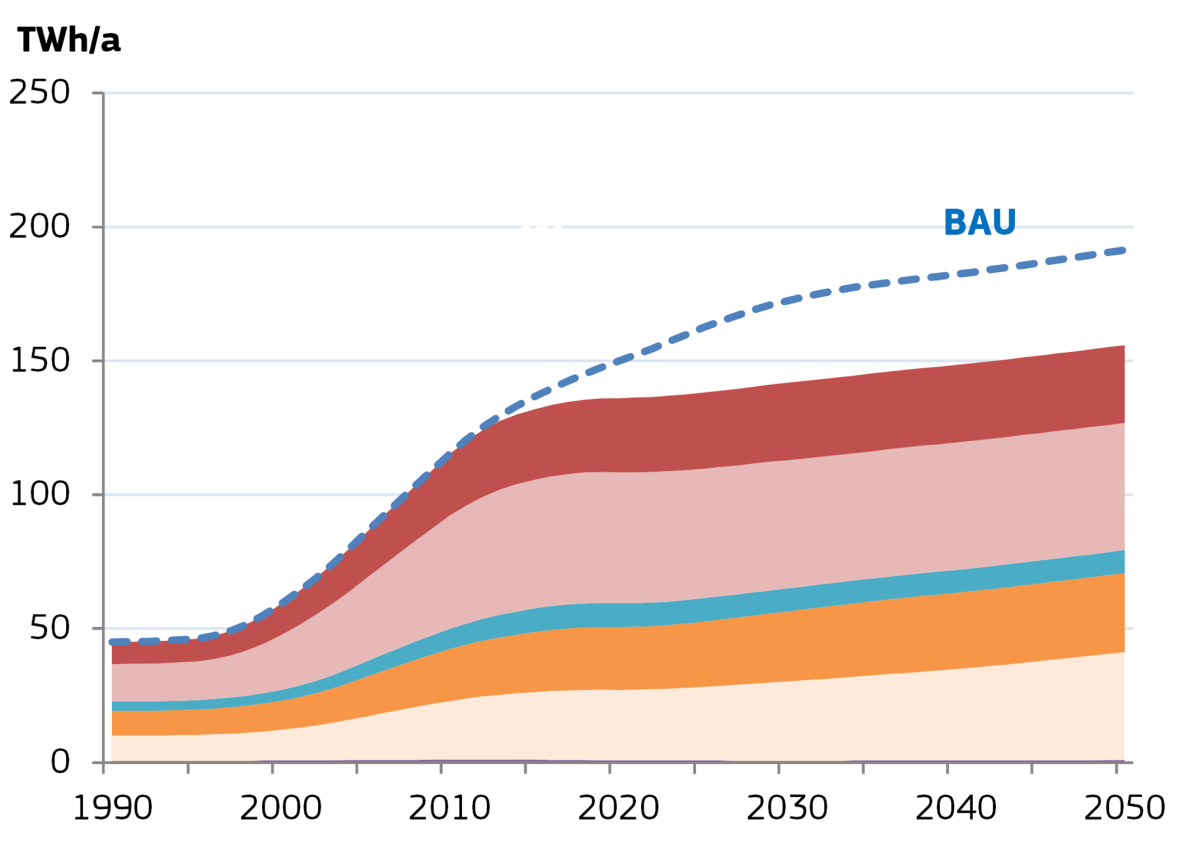Fans typically blow air and have a low output pressure. This distinguishes them from compressors (higher output pressure) and from pumps (act on liquids).
Since 1 January 2013, Regulation (EU) 327/2011 sets Ecodesign requirements for industrial fans driven by an electric motor with an input power between 125 W and 500. From 24/07/2026, it will be replaced by the Ecodesign Regulation 2024/1834 that covers the same range (125-500 kW motor input power) with stricter performance requirements, new requirements with respect to repairability, and with requirements on fan performance at different loads and speeds (press release).
The range (125-500 kW) covers around 5% of the nearly 4 billion fans in use in EU, but they are responsible for 80% of the electricity consumption by fans.
Different types of fans (for different applications) have different efficiencies and are therefore separately addressed in the regulation.
Smaller fans (< 125 W) are often integrated in products that are already regulated (or for which regulation is judged not effective), and are therefore excluded from the regulation. They represent more than 90% of all installed units but only 10% of total fan electricity use. Fans below 125 W, used for comfort purposes are covered by the EU Ecodesign regulation for air conditioners and comfort fans (EU) 206/2010.
Very large fans (> 500 kW) sell less than 1000 units per year, but account for 10% of total fan electricity use. They are applied in e.g. cogeneration and power plants and industrial processes. The energy awareness of their end-users is very high and market forces are assumed to ensure use of energy-efficient solutions; therefore they are also excluded from the regulation.
Examples of Industrials Fans types
Source: estimations from the Ecodesign Impact Accounting Overview Report 2023











